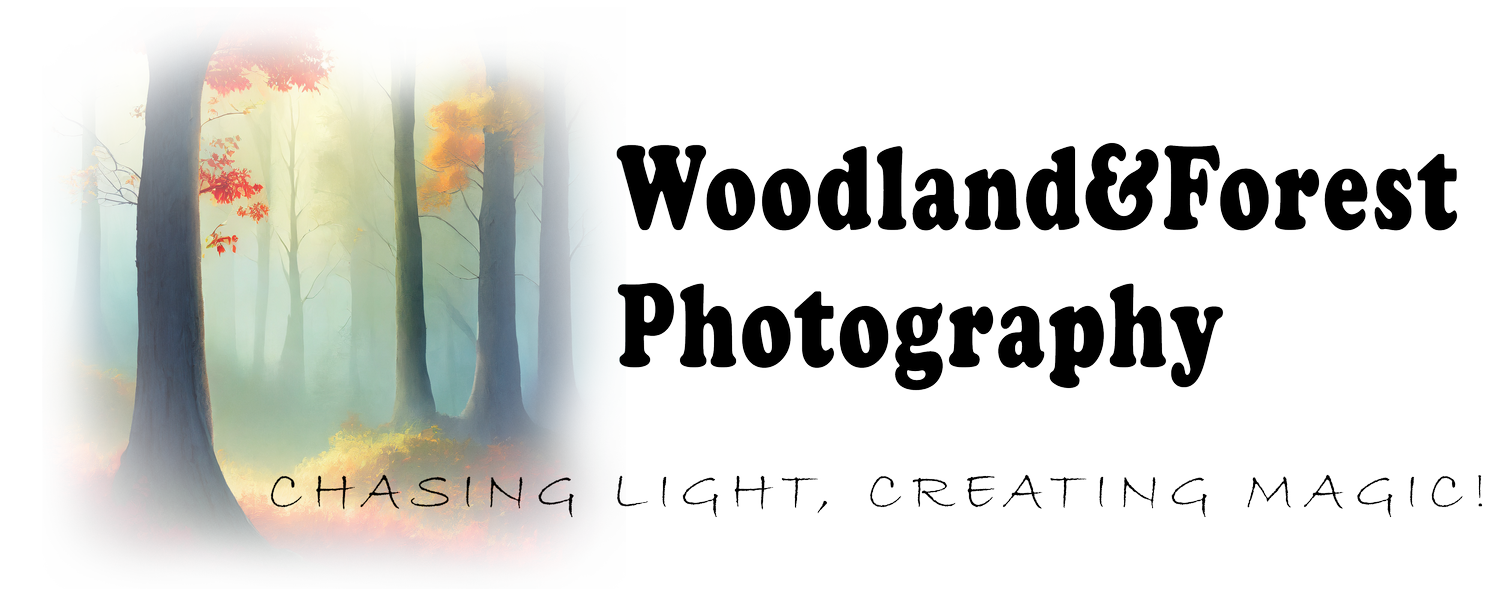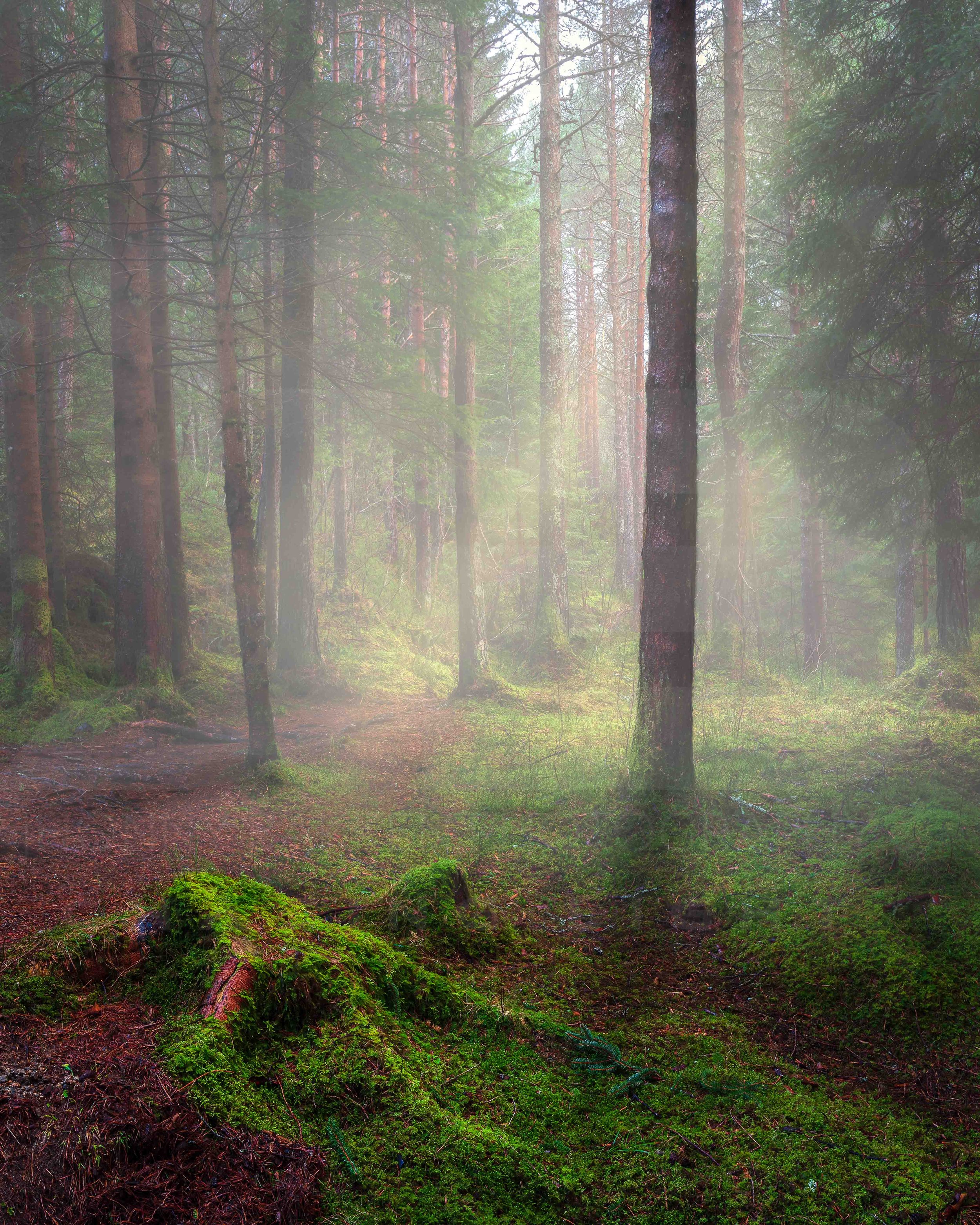Woodland & Forest Photography
Bringing the Beauty of Woodlands and Forests to Life
December 31, 2023
MONTHLY NEWSLETTER
Dear Photography Enthusiasts,
As we approach the end of the year, it's always a good time to reflect on our journeys as photographers. I hope this newsletter finds you in good spirits and offers some inspiration to overcome any challenges you may be facing. In this issue, we will talk about how to overcome burnout and find inspiration for your photography.
Burnout and Inspiration
If you, like me, have been feeling burned out, lost inspiration, or struggled to find compositions for your photography, you are not alone. Many photographers face these challenges at some point in their journey, especially when they have a lot to do at work, or some health issues slowing them down. Woodland & Forest photography can be rewarding, but also demanding and frustrating, as it requires patience, creativity, and skill to deal with the complex and chaotic scenes of the forest.
However, there are ways to overcome burnout and find inspiration for your woodland photography, and we will share some of them with you in this newsletter. These are not definitive solutions, but rather suggestions that may help you rekindle your passion and enthusiasm for the woods. I'm going through this process now, and I want to share what I have found that seems to work for me. These advices have helped me, and hopefully they might be of help to you too.
Ways to Overcome Burnout and Find Inspiration
Take a break: Sometimes, the best thing you can do is to take a break from your photography, and focus on other aspects of your life, such as your work, your health, your family, or your hobbies. Taking a break can help you relax, recharge, and gain a fresh perspective on your photography. You may also discover new sources of inspiration from other fields or activities, such as music, art, literature, or sports.
Revisit your old photos: Another way to overcome burnout and find inspiration is to revisit your old photos of the woods, and see how far you have come, and what you have learned. You may also find some photos that you overlooked or dismissed before, and give them a second chance. You may be surprised by how much you can improve your old photos with some editing, cropping, or tweaking. You may also get some ideas for new photos, by noticing what you liked or disliked about your old ones.
Learn from others: A third way to overcome burnout and find inspiration is to learn from other photographers, especially those who specialize in your kind of photography. You can find many sources of inspiration and education online, such as websites, blogs, articles, videos, podcasts, or social media.
Try something new: A fourth way to overcome burnout and find inspiration is to try something new in your photography, such as a new technique, a new style, a new location, or a new challenge. Trying something new can help you break out of your comfort zone, expand your skills, and discover new possibilities. For example, you can try these ideas:
Use a different lens: If you usually use a wide-angle lens, try using a telephoto lens, or vice versa. A different lens can give you a different perspective, and help you isolate or include different elements in your scene.
Use a filter: If you don’t use filters, try using one, such as a polarizer, a neutral density, or a graduated neutral density. A filter can help you enhance or create different effects in your image, such as reducing glare, increasing saturation, blurring motion, or balancing exposure.
Use a different format: If you usually shoot in landscape orientation, try shooting in portrait orientation, or vice versa. A different format can help you change the balance and dynamics of your composition, and emphasize different aspects of your scene.
Use a different mode: If you usually shoot in manual mode, try shooting in aperture priority, shutter priority, or auto mode, or vice versa. A different mode can help you focus on different parameters of your exposure, and experiment with different settings and outcomes.
Use a different time: If you usually shoot in the morning, try shooting in the evening, or vice versa. A different time can help you capture different light and mood in the woods, and create different effects and colors in your image.
Use a different season: If you usually shoot in one season, try shooting in another season, or in between seasons. A different season can help you capture the changing colors and textures of the woods, and the different flora and fauna that inhabit them.
As we bid farewell to 2023, let's embrace the coming year with renewed enthusiasm and a passion for capturing the enchanting beauty of woodlands and forests through our lenses.
Remember, every photograph tells a story, and each story holds the power to inspire and captivate. Let's work together to continue sharing the awe-inspiring wonders of nature with the world. Wishing you a fulfilling and creatively prosperous year ahead!
I hope you enjoyed this issue of the Woodland & Forest Photography Newsletter, and that you found some useful tips and inspiration for your woodland & Forest photography. We would love to hear from you, so please feel free to share your feedback, questions, or suggestions with us on our social media channels. Until next time, happy shooting, and a Happy New Year!
Sincerely,
Jhonny Bakken
Founder, Woodland & Forest Photography
Woodland & Forest Photography,
Nygjerdet 14, 6030 Langevåg
Møre og Romsdal
NORWAY


